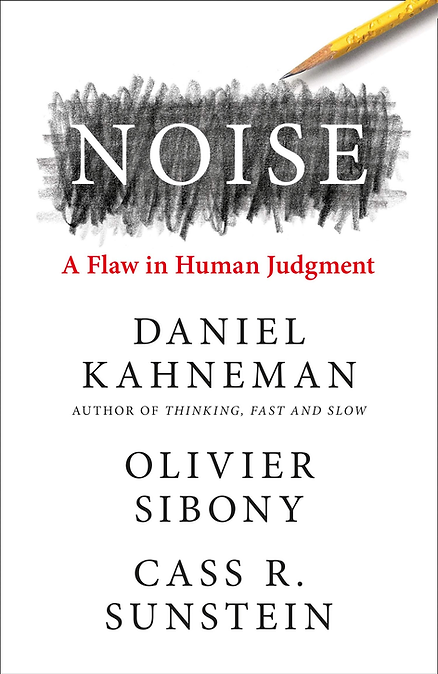Noise in Talent Identification in Sports: How to Turn the Volume Down
Where there is judgment, there is noise―and usually more of it than you think.
Are coaches and talent scouts adept at identifying the next big star in the world of sports? Is there a reliable method to separate the wheat from the chaff when it comes to recognizing high-potential players? The concepts of "wisdom of the crowds" and the "madness of crowds" have been bandied about, and it's time we explore how they apply to the challenging realm of talent identification in sports.
In Noise, Daniel Kahneman, Olivier Sibony, and Cass Sunstein explore the often-overlooked problem of variability in human judgment. Unlike bias, which skews decisions predictably, noise refers to random, inconsistent errors that arise from factors like individual differences, context, and irrelevant influences. The authors identify three types of noise: level noise (differences in judgment across individuals), pattern noise (inconsistent application of rules), and occasion noise (momentary factors like mood or environment). This variability undermines fairness, credibility, and decision quality, often leading to significant financial and social costs. They propose solutions like "decision hygiene," the use of structured processes, algorithms, and noise audits to quantify and reduce these errors. Ultimately, the book argues that while addressing bias is important, tackling noise is equally crucial for improving decision-making and organizational outcomes. While the book primarily focuses on the broader implications of noise in human judgment, its principles can be astutely applied to the world of sports talent identification.

Understanding Noise in Talent Identification
In talent recruitment, potential is the cornerstone. While performances will inevitably fluctuate—especially for young players—their potential should remain the guiding light of evaluations. This potential forms the foundation upon which future success is built, and organizations must avoid letting noise, such as recent form or external hype, obscure the true qualities of a player. Realizing potential requires investment, development, and time, but identifying that potential accurately is the first and most critical step. Thus, eliminating noise requires a sharp focus on the distinction between potential and performance, as the latter is inherently subject to variability and should not overly influence decisions about a player’s long-term prospects. The depth of this concept is outside the scope of this article.
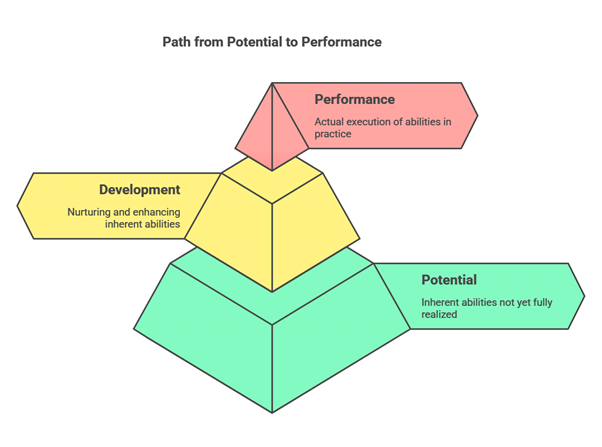
Sources of Noise
Kahneman identifies several sources of noise:
- Cognitive abilities, general IQ, and experience.
- Personality and cognitive style.
- Idiosyncratic weighting of considerations and selective attention.
- Subjective scales (e.g., “good job” means different things to different people).
- Mood, including external factors like weather and fatigue.
- Social influences (e.g., popularity bias).
- Lack of formal decision-making procedures.
- Focusing excessively on outcomes instead of processes.
- Biases, such as substitution, conclusion, and excessive coherence biases.
Where noise has infected.
Noise, the variability in judgments not attributed to bias, permeates various industries, creating significant challenges and inefficiencies.
Financial Services
In financial services, noise audits have revealed substantial inconsistencies in professional judgments. For instance, underwriters tasked with quoting premiums for the same case have demonstrated up to 50% variability. One underwriter might estimate $700, while another quotes $1,250 for identical circumstances. Such discrepancies not only undermine fairness but also introduce inefficiencies in processes that rely on consistency. This variability, a product of subjective interpretations and personal judgment, poses risks to the reliability of critical financial decisions.
Medical Diagnostics
The medical field also experiences the pervasive effects of noise, even among highly trained professionals. Radiologists, for example, have been found to give different diagnoses for the same x-ray 20% of the time. Similarly, pathologists, when assessing identical biopsy results, showed a correlation of only 0.61 in their evaluations. These inconsistencies can lead to incorrect treatments or delays in care, emphasizing the importance of structured and standardized diagnostic protocols.
Creative and Subjective Fields
Noise is equally prevalent in fields where subjective judgments are integral. In the world of wine tasting, even trained experts frequently disagree with their prior ratings of the same wine, highlighting the variability inherent in subjective evaluations. Such noise undermines trust in expertise and raises questions about the reliability of judgments in domains that lack clear, objective measures.
Project Planning and Execution
In industries reliant on planning and forecasting, noise disrupts operational efficiency. Software developers, for instance, have demonstrated an average variability of 71% in estimating task completion times when asked on different occasions. These inconsistent projections can lead to flawed project timelines, resource misallocation, and unmet deadlines, underscoring the need for better planning frameworks and tools.
Implications and the Need for Noise Reduction
The examples from financial services, healthcare, creative industries, and project planning showcase the widespread impact of noise on decision-making. Inconsistent judgments not only erode trust but also have tangible consequences on outcomes. Implementing structured processes, standardized protocols, and decision-support systems is essential to mitigating noise and ensuring greater reliability across diverse fields.
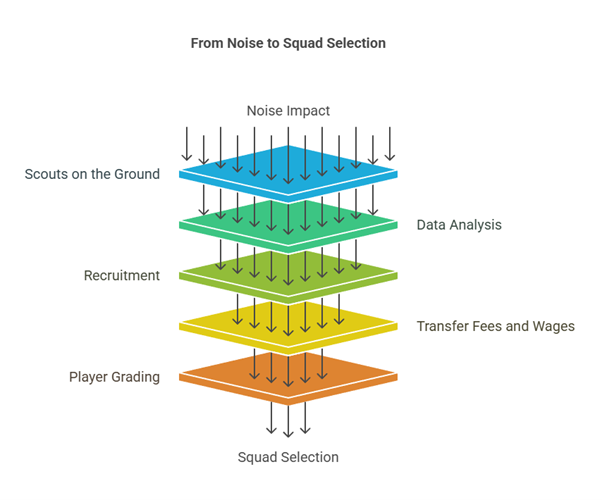
How Noise Infiltrates Talent Identification
In the realm of talent identification, noise—the random and unpredictable variability in judgments—can seep into every layer of the process, from grassroots scouting to senior squad selection. This infiltration disrupts the fairness, consistency, and effectiveness of decision-making. By analysing how noise operates across the talent pipeline, from scouting young players to squad formation, we can understand its profound implications and explore strategies to mitigate its impact.
Noise at the Grassroots: Early Talent Identification
The first stage of noise infiltration often begins with scouts on the ground, evaluating players as young as 10 or 11 years old. At this level, frameworks for evaluation must clearly delineate between potential, and performance—two constructs that are often conflated. Potential, the cornerstone of talent identification, is foundational and enduring, while performance, particularly at a young age, is prone to fluctuations influenced by external factors such as team dynamics, physical development, or even environmental conditions.
Noise emerges here in several forms:
- Subjective weighting: Scouts may unconsciously prioritize different attributes based on personal biases, such as favouring physicality over technical skill or valuing certain playing styles over others.
- Selective attention: Evaluators may focus on isolated events, such as a standout performance in a single game, without considering the broader context of the player’s consistency and growth trajectory.
- Social influences: The reputation of a player within the broader scouting community can lead to groupthink, where judgments are swayed by external validation rather than independent analysis.
A standardized, formalized framework is essential to minimize noise at this stage. This includes clear definitions of potential, structured evaluation criteria, and mechanisms for independent assessments, ensuring fairness and consistency in the evaluation of young players.
The Role of Data: Potential Pitfalls and Opportunities
In modern talent identification, data plays a pivotal role, offering a wealth of metrics to support decision-making. However, noise can infiltrate even here, particularly when metrics are misapplied or overemphasized. A critical cautionary concept is Goodhart’s Law: when a measure becomes a target, it ceases to be a good measure. Metrics that were initially designed to supplement evaluations can become over-relied upon, distorting the recruitment process.
For example, if a scouting team prioritizes isolated metrics as a method for identifying talent and misses out on the more subjective fluid nature of the game, anticipatory factors, positioning, timing of runs, particularly at the youth level, when other more formalised markers of a ‘good performance’ will develop as a player matures especially physically, they may miss the hallmarks of potential.
This is not an attempt to downplay the role of data, only to be aware of its pitfalls.
Recruitment: The Cumulative Impact of Noise
Recruitment decisions sit at the heart of talent identification. However, if earlier stages of the process are riddled with noise, this will cascade into suboptimal recruitment outcomes. Poorly constructed recruitment frameworks lead to:
- Financial Costs: Misjudging talent results in inflated transfer fees and wages for underperforming players. Conversely, failing to recognize high-potential players can represent a significant opportunity cost.
- Squad Imbalance: Noise in evaluations can lead to the recruitment of players who do not align with the team’s long-term strategy, resulting in an unbalanced squad that struggles to compete effectively.
- Wage Liabilities: Long-term contracts for overvalued players constrain financial flexibility, preventing the organization from investing in other areas or nurturing emerging talent.
Mitigating noise at this stage requires rigorous frameworks, frequent noise audits, and structured decision-making processes that integrate diverse perspectives while minimizing subjective variability.
Player Evaluation Sessions: Group Dynamics and Noise
Player grading and evaluation sessions, particularly at developmental stages, are another critical point where noise can influence decisions. A common source of noise in these settings is group dynamics, where dominant voices within a discussion can disproportionately influence the group’s overall judgment. For instance, a senior evaluator’s initial opinion might overshadow dissenting perspectives, leading to groupthink and skewed decisions.
Another One of the most common opportunities for noise to infiltrate talent identification processes is during player evaluation sessions when previous evaluations, grades, or meeting notes are not properly recorded or readily available, leaving room for idiosyncratic noise to influence decision-making. Without a clear historical reference, evaluators may unconsciously shift their opinions based on recent, often irrelevant, factors such as a player’s recent performances, media narratives, or even group dynamics within the session. These opinion shifts can derail the consistency of evaluations, especially if they are driven more by noise than by substantial changes in the player’s potential or performance. To address this, it becomes critical to explore and challenge why such changes in opinion have occurred, identifying whether these shifts reflect valid, evidence-based updates or simply the result of variability in judgment. By anchoring discussions to recorded evaluations and structured criteria, organizations can mitigate this form of noise and ensure that player assessments remain fair, consistent, and focused on long-term potential rather than short-term fluctuations.
These dynamics has far-reaching implications:
- Opportunities: Players might miss out on key developmental opportunities, such as promotions to higher age groups or exposure to more challenging environments, due to biased evaluations.
- Contract Renewals: Noise in group evaluations can also influence decisions about which players to retain, with some overlooked due to an overemphasis on recent performances or anecdotal evidence.
The Long-Term Ramifications of Noise
The cumulative effects of noise can persist for years, ultimately shaping the makeup and performance of the senior squad. When noise filters through every stage of the talent pipeline—early scouting, data analysis, recruitment, and player evaluations—it leads to suboptimal squad formation. This might manifest as:
- Underperforming Squads: Teams that struggle to compete due to poor recruitment and misaligned strategies.
- Lost Potential: High-potential players overlooked early in the process might excel elsewhere, representing missed opportunities.
- Financial Inefficiency: Inflated transfer fees and wage bills for underperforming players reduce flexibility and hinder long-term planning.
These issues highlight the importance of minimizing noise early in the process, as decisions made at the grassroots level ripple through the entire organization.
Solutions and Strategies to Noise
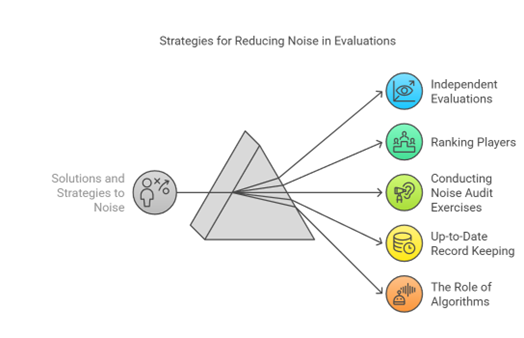
Independent Evaluations: Protecting Thought and Promoting Objectivity
One of the most effective strategies to combat noise in talent identification is the implementation of independent evaluations prior to group discussions or grading sessions. When evaluating current players, rosters, or potential recruits at various age groups, it is essential to ensure that evaluators are provided with a structured and detailed framework for assessments. These guidelines should clearly outline the criteria for evaluation, focusing on key attributes such as potential, technical ability, and adaptability. Evaluators should document their independent judgments before attending any meetings, creating a record of their thoughts unaffected by group dynamics or external influence.
Anonymizing these evaluations further enhances the integrity of the process. This approach protects the independence of thought, preventing hierarchical pressures or dominant personalities from swaying opinions. The principle at play here reflects the wisdom of the crowd: groups tend to make better decisions when individual judgments remain independent before being aggregated. Independence safeguards the diversity of perspectives, allowing a more robust and unbiased foundation for discussion.
The purpose of the meeting, then, shifts to being a forum for reconciling conflicting ideas, fostering healthy debate, and challenging assumptions. Culturally, this requires cultivating an environment where disagreement is not only accepted but encouraged as a vital part of the decision-making process. Groupthink—the tendency to converge on a single idea without sufficient scrutiny—can undermine the quality of judgments. By ensuring that evaluators are comfortable expressing differing opinions and by approaching disagreements constructively, organizations can arrive at better, more nuanced decisions.
The importance of independence in idea generation is backed by research, which consistently shows that brainstorming and ideation are more effective when done alone. Independent thinking allows individuals to focus on their unique insights without the cognitive burden of group dynamics. When brought together, these independently formed judgments create a richer, more comprehensive evaluation process that is less prone to noise and bias.
By prioritizing independent evaluations and fostering a culture that values constructive disagreement, organizations can significantly reduce noise, promote fairness, and enhance the quality of decisions in talent identification.
Ranking Players: Aligning with Base Rates and Eliminating Subjective Scales
When ranking players, a key strategy for reducing noise is moving away from subjective scales and grounding evaluations in evidence-based frameworks. Subjective descriptors like “world-class” or “huge potential” are inherently ambiguous, as their meaning can vary significantly between individuals. Instead, evaluations should adopt ranking systems that focus on relative comparisons within a predetermined structure. For example, players should be ranked from first to last within a roster based on clearly defined and objective criteria. This forces evaluators to make direct comparisons between players, eliminating the vagueness that subjective descriptors often introduce.
Example of a Youth Team Roster over 7 Seasons
Equally important is aligning these rankings with the base rate of development within the system. Understanding base rates—the statistical likelihood of players progressing to contribute meaningfully to the senior team—provides a rigid framework that ensures evaluations reflect reality. For instance, if historical data indicates that only 5% of players in a given roster will advance to the senior team, ranking systems should be constructed with this distribution in mind. This predetermined framework serves as a guideline to maintain alignment with organizational expectations, preventing evaluators from overrating or underrating players based on anecdotal or short-term impressions.
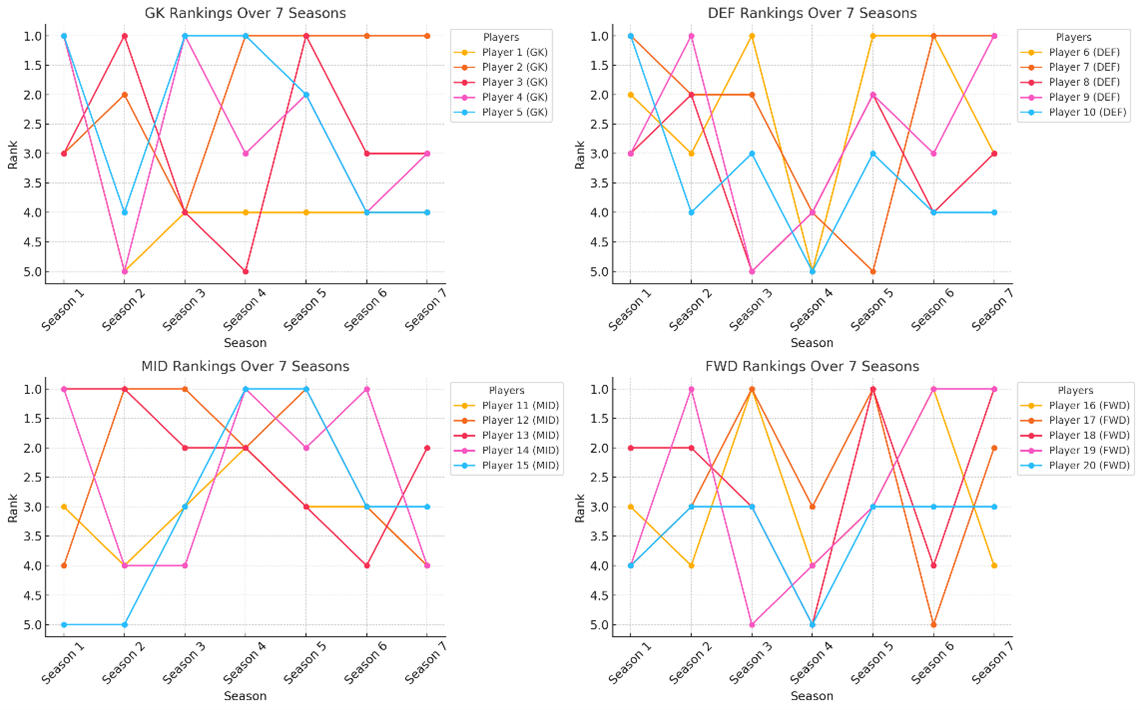
Example of a Base Rate Evaluation over 10 Years
By ranking players within the context of the entire roster, rather than loosely assigning subjective terms, the process becomes more systematic and comparable. It encourages evaluators to think critically about a player’s standing relative to their peers and eliminates much of the noise introduced by inconsistent language or unstructured scales. Additionally, integrating base rate data ensures that the organization remains grounded in historical evidence, promoting realistic and objective decision-making. This dual approach of firm rankings and base rate alignment creates a structured and consistent evaluation process, significantly reducing noise and improving the accuracy of talent identification.

Conducting Noise Audit Exercises: A Practical Approach for Scouting
Noise audits are powerful tools to uncover variability in judgments and improve consistency within a talent identification framework. In the context of scouting a player, a noise audit exercise can involve the entire scouting team independently evaluating the same player using a standardized rubric. Each scout documents their evaluation, including both qualitative and quantitative aspects, without prior discussion with the group. These evaluations are then analyzed collectively to identify patterns of noise, such as level noise (differences in average ratings across scouts), pattern noise (individuals consistently rating based on personal preferences), or occasion noise (variability influenced by irrelevant factors like recent form or mood).
When the results are brought back to the group, the symptoms of noise become more apparent. For example, if one scout consistently rates players higher than others, or if evaluations differ widely due to subjective criteria, these inconsistencies can be addressed. Crucially, the noise audit does more than just highlight the problem—it provides concrete evidence for how processes can be standardized to reduce variability. By pinpointing where and why judgments diverge, teams can implement clear evaluation frameworks, develop unified rubrics, and train scouts to focus on consistent criteria. This approach not only improves fairness and objectivity but also fosters alignment within the team, leading to more reliable decision-making. Ultimately, noise audits serve as a practical foundation for creating processes that consistently deliver accurate and effective player evaluations.
Up-to-Date Record Keeping in Player Evaluation
Having up-to-date and comprehensive records of previous meetings, grading sessions, and evaluations is integral to ensuring consistency and reducing noise in player identification. These records serve as a critical reference point for understanding past decisions, tracking the evolution of opinions, and maintaining alignment with long-term strategies. Detailed documentation should include what was said during meetings, the grades assigned to players, the rationale behind those grades, plans for future evaluations, and any specific approaches or methodologies that were agreed upon. Without such records, teams risk introducing unnecessary variability into their evaluations, as shifting opinions and incomplete recollections can distort future decisions.
Maintaining these records allows scouts, coaches, and technical directors to anchor their evaluations to consistent benchmarks. For example, if a player’s potential was highlighted in an earlier session but subsequent evaluations appear to deviate significantly, the group can revisit the initial documentation to identify whether the change reflects valid updates or simply noise creeping into the process. Additionally, records ensure that decision-making is transparent and collaborative, enabling all stakeholders to understand the context and reasoning behind previous judgments. By creating a structured, accessible repository of past evaluations, organizations can foster a culture of accountability, standardize processes, and ensure that decisions are made with a full understanding of the historical context. This not only reduces noise but also enhances the credibility and effectiveness of the talent identification process. Moreover, maintaining thorough records provides a robust framework for Backtesting. By comparing historical evaluations with actual outcomes, organizations can assess the accuracy and effectiveness of their processes over time. For instance, if a player identified as having high potential underperforms or, conversely, a player overlooked thrives elsewhere, these outcomes can be traced back to the documented evaluation process to uncover what factors influenced the decision. This enables teams to refine their grading criteria, adjust their evaluation methodologies, and learn from past mistakes. Backtesting transforms historical data into actionable insights, creating a feedback loop that continuously improves the quality of talent identification.
The Role of Algorithms and Simple Rules in Eliminating Noise
Daniel Kahneman argues that the greatest method to eliminate noise in decision-making is to employ algorithms. Algorithms are rule-based systems capable of analysing massive volumes of data and making objective, consistent judgments. Unlike humans, algorithms are not influenced by cognitive biases, emotions, or irrelevant contextual factors, and they consistently reach the same conclusions when presented with identical information multiple times. This makes them a powerful tool for reducing noise. However, Kahneman acknowledges that algorithms are not flawless. If trained on biased data, they can perpetuate those biases, highlighting the importance of careful design and oversight.
Kahneman's work provides compelling examples of how noise affects decision-making in various fields. One striking case involves judicial decisions, where research revealed significant variability in judges’ rulings on parole cases. In some instances, judges granted parole in 70% of cases, while in others, only 10% of cases received approval, despite the cases being similar in nature. This variation was not due to differences in the cases but rather to noise in the judges’ decision-making processes—factors like their mood, hunger levels, or even the time of day.
Another example comes from medicine, where studies have shown that even when given identical patient information, different physicians can arrive at different diagnoses. This noise can have severe consequences for patients, as it may lead to inconsistent treatments or misdiagnoses, depending on the doctor consulted. Kahneman highlights how such variability underscores the importance of integrating algorithms into diagnostic processes to standardize outcomes and reduce the risks associated with human error.
Kahneman emphasizes the effectiveness of linear models and simple algorithms in addressing these challenges. In medicine, for example, scoring systems based on symptoms and diagnostic criteria have been shown to outperform physicians in predicting patient outcomes. Similarly, in judicial systems, algorithms trained on objective case data can standardize parole decisions, reducing the variability caused by human judgment.
The success of algorithms extends to fields like talent identification, where noise in scouting can be reduced by replacing subjective evaluations with structured ranking systems and data-driven assessments. Algorithms can analyze key metrics—such as physical performance, game influence, and general game statistics—to produce consistent and unbiased evaluations. By aligning these outputs with historical data, organizations can ensure that decisions are both data-driven and contextually relevant.
However, Kahneman stresses that while algorithms are a significant improvement over human decision-making processes, they are not a perfect solution. Algorithms must be designed and trained carefully to avoid embedding systemic biases present in historical data.
Kahneman highlights that while algorithms are not without flaws, they represent a substantial improvement over human decision-making processes prone to noise and bias. By designing algorithms thoughtfully, integrating them with simple rules, and supplementing them with human expertise, organizations can significantly reduce noise, enhance fairness, and achieve more reliable and consistent outcomes across a variety of fields.
When Noise Becomes an Asset
Noise is an unavoidable reality—but it doesn’t have to be purely detrimental. While Kahneman and his co-authors emphasize the risks noise poses—undermining fairness, credibility, and decision quality—it is important to acknowledge that not all noise is inherently harmful. In some contexts, noise can be a powerful catalyst for creativity, diversity of thought, and uncovering unconventional opportunities. For example, in sports talent identification, rigid adherence to algorithms or standardized frameworks may inadvertently filter out players who don’t fit conventional molds. A scout’s intuition, shaped by years of experience, might identify intangible traits such as leadership, adaptability, or resilience—qualities that data cannot easily quantify but are often crucial to long-term success. This "constructive noise" prevents the stifling of creativity and helps identify outliers who might otherwise be dismissed.
The value of noise is particularly evident in environments that thrive on experimentation and exploration. Disagreement, variability in opinions, and fresh perspectives are often the breeding ground for breakthroughs. In brainstorming sessions, for example, noise in the form of diverse and unconventional ideas can challenge assumptions, refine strategies, and lead to more robust solutions. In the context of sports, such variability can bring to light unexpected qualities in players that structured processes might overlook. In these cases, noise fosters a culture of questioning, growth, and adaptability, which is essential in navigating the unpredictable and dynamic nature of sports.
However, welcoming noise does not mean abandoning structure. The challenge for decision-makers lies in distinguishing between productive and unproductive noise. Productive noise enriches discussions and introduces perspectives that might otherwise be missed. For instance, allowing scouts to voice their observations, even when they diverge from algorithmic predictions, ensures that unique insights are not discarded prematurely. On the other hand, unproductive noise—arising from inconsistencies, mood swings, unstructured evaluations, or external pressures—can undermine the integrity of decision-making and must be mitigated through careful planning, standardized processes, and frameworks.
This balance between structure and noise is particularly important in high-stakes fields like talent identification, where the margin for error is small and the consequences of decisions can be far-reaching. Tools such as algorithms, noise audits, and rigorous record-keeping help reduce variability and ensure consistency, but they should complement—not overshadow—the human element. The ability to adapt, think creatively, and account for nuance is often what sets great decision-makers apart. Noise, when managed effectively, can act as a safeguard against groupthink and over-reliance on rigid systems, providing resilience and flexibility in decision-making.
Ultimately, the goal is not to eliminate noise entirely but to control it, contextualize it, and harness it where it adds value. Decision-makers must build systems that combine the precision of structured processes with the adaptability of human intuition. By reducing harmful variability while embracing constructive noise, organizations can uncover potential that might otherwise go unnoticed, foster diverse perspectives, and create strategies that are both robust and adaptable. In sports talent identification—and beyond—noise may always be present, but with the right approach, it can be transformed into a strength, enabling organizations to thrive in a world of uncertainty and complexity.
